#Zohar Strauss
Explore tagged Tumblr posts
Text
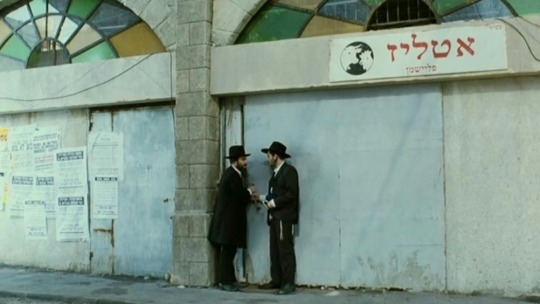
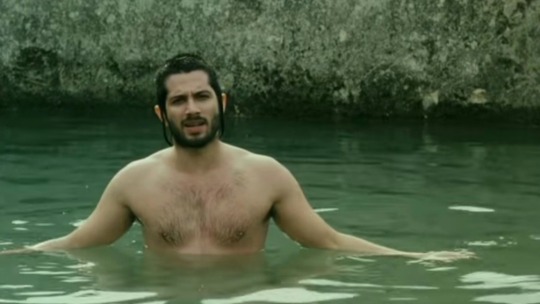

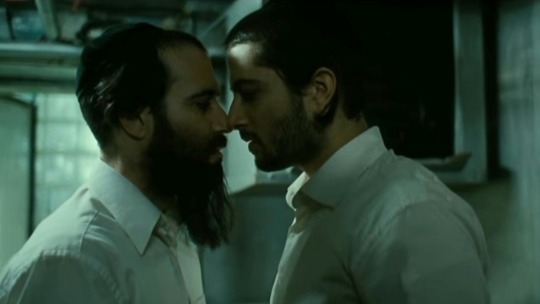
Eyes Wide Open (2009) dir. Haim Tabakman
#eyes wide open#cinema#jewish cinema#jumblr#queer#lgbtq characters#lgbt cinema#zohar strauss#ran danker#movie stills#film stills
53 notes
·
View notes
Photo



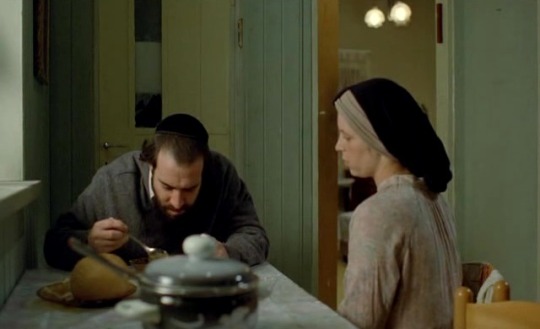

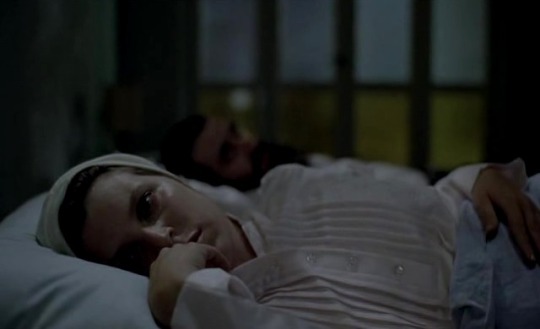

EYES WIDE OPEN (2009), directed by Haim Tabakman.
#eyes wide open#haim tabakman#ran danker#zohar strauss#ravit rozen#gay#queer#lgbt#gay cinema#queer cinema#lgbt cinema#israeli cinema
22 notes
·
View notes
Text
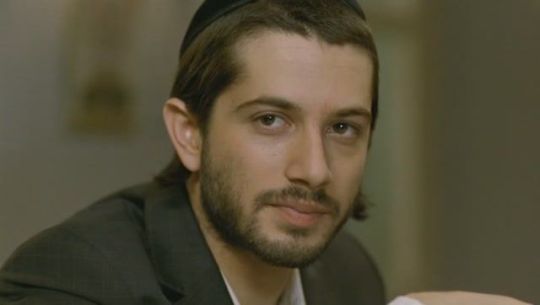




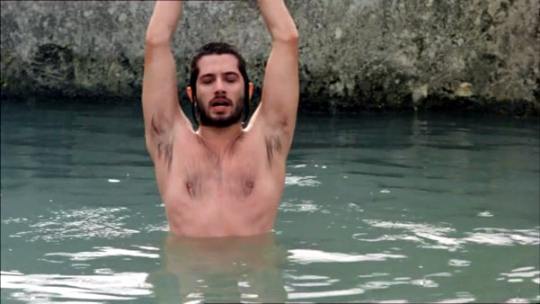
#ran danker#eyes wide open#israeli men#israeli guys#hot israeli actors#hot israeli guys#israeli hunks#zohar strauss#hot jewish men#גברים חתיקים
13 notes
·
View notes
Photo








Zohar Strauss as Aaron Fleischman and Ran Danker as Ezri in Eyes Wide Open (2009)
#Aaron & Ezri#Ran Danker#רן דנקר#Khalil Yosef Danker#Zohar Strauss#זהר שטראוס#Zohar Zalman Strauss#Eyes Wide Open (2009)#עיניים פקוחות#Einayim Petukhoth#Eyes Wide Open#mg
36 notes
·
View notes
Text

Eyes wide open (Tu n’ amieras point) 2009
1 note
·
View note
Video
instagram
#shtisel #Shtisel3 Zohar Strauss (@zoharstrauss) is back on the set of Shtisel Season 3 as Lippe and he has a message for us. I only picked out "friends", "set of Shtisel 3" and "bye". Still, it is fun to know that filming progresses! From @yestv Instagram stories. @yesstudios @perrykafri_agency https://www.instagram.com/p/CEUHimSDEMo/?igshid=7u2kqkgax7d9
1 note
·
View note
Photo

Stuck in quarantine, I make a video in which I get romantic with a spoon. I send it to my friends, one of whom tells me to check out the video poems of Adeena Karasick. Some online digging tells me Karasick is a Brooklyn-based poet, writer, performer, and thinker whose work tackles the fun and the real. She also happens to be on the line-up for Mekuvan, Jerusalism’s first online reading series. In a cool combo of fate and query, I interview her and ask more about what’s happening between the lines of her words.
When Adeena sends me an email, she calls me “sweets” and “babe.” Though we think about speaking on Zoom, our interview happens over email, which is to say—text. I don my best quasi-professional internet speak while Adeena skyrockets into my gmail, peppering her answers with emoticons and parentheticals, taking me inside and outside her answers in a slightly overlarge Arial font. Her I’s are lowercase, her proper nouns uppercase. Her signature is one lone, light gray “a.”
I go deep into Karasick’s online corpus. Soon I’m floating. Her virtual vocals hold words fused across mediums, embodying a world intimate with its own supposition of depth. Within this world is the explicit understanding that depth is about layers, and its meaning comes from the interaction of all things—poetry, politics, kabbala!—not nearly as disparate as we imagine. Her work reminds me of the internet itself: obsessed by its ever-updating form and devoted to the process of making image meet word.
In our interview, Adeena tells me as much, making sure to blow my mind with the theoretical underpinnings of her playful, sexy, serious work. She signs off on our correspondence with ; ))))))) and !!!!!!! and xxxxxxx. Though we’ve finished speaking for now, I find myself again looking at her work, mesmerized. An in to the infinite. Here are some of her thoughts on the matter.
—
Joelle Milman: The infinite abounds in your work. What is your relationship to ein sof?
Adeena Karasick: I like thinking about ways in which ein sof is where all possibility erupts; everything that has been and will be created is housed in a kinda blueprint of potentiality. I think this sense of potent play is crucial, opening up dialogue for new possibilities of reference, connection, an “infinite” unfolding of semantic, syntactic (political) possibilities.
In the Zohar it says, “all binding and union and wholeness are secreted in the secrecy / that cannot be grasped and cannot be known, / that includes the desire of all desires. // Infinity does not abide being known, / does not produce end or beginning./ Primordial Nothingness brought forth Beginning and End? Who is Beginning?… It produces End… But there, no end.” ;)
I guess you could say this sense of questioning and a sense of endless opening really interests me. Take for example, how transliterated ein (nothing) is homophonically connected to ayin (eye) through which we can envision anything. Or if one shifts the letters to ani (i), then we are between being and nothingness, endlessly re-presencing. I’m interested in navigating this space between visibility and invisibility, what is revealed, concealed, veiled unveiled through the flux of form, emanation, re-formation. Recognizing, of course, that in order for anything to be manifested there has to be a limit, a concealment. I adore this ex-static play of expansion and contraction, where everything hums with a kinda vertiginous, vibratory edge.
JM: Who is your muse?
AK: Abraham Abulafia, 13th C. Kabbalistic mystic.
JM: Your ew hybrid poetic work, Salomé, takes a misunderstood character and gives her a new story. What was it like to work with such a specific character, attached to particular historical narratives?
AK: Well, it always bothered me that within Christian mythology and entrenched in history by writers like Wilde, Gustave Flaubert, Mallarmé, artists such as Gustav Klimt, Gustave Moreau, and Aubrey Beardsley, Salomé was seen as yet another Jewish temptress/Christian killer (which is not so great for the Jews ;).
But, in fact, there isn’t any evidence to substantiate this claim. I did a whack of research and according to apocrypha and Josephus’s Antiquities, she came from Jewish royalty and there is no evidence she murdered John the Baptist or even danced for Herod. The only historical reference that [Herod’s wife] Herodias’s daughter’s name was Salomé is from Flavius Josephus, who makes no other claims about her—not that she danced for Herod, not that she demanded John’s head, but only that she went on to marry twice and live peacefully. The other apocryphal reference is that a daughter danced for Herod, which caused him to lose his mind and kill John the Baptist. Thus, the conflagrated Salomé that appears in the Wilde play, [Richard] Strauss opera and all subsequent productions, is an amalgamated construct. Along with Klezmer/jazz god Frank London, I embarked on a 7 year journey to set the record straight.
For the record, there are three women named Salomé in Jewish history: Salomé, daughter of Herodias and Herod II (circa 14-71 CE); Queen Salomé, her great-aunt (65 BCE-10 CE); and Salomé Alexandra (139-67 BCE). Her great-aunt, Salomé I, was the powerful sister and force behind Herod the Great, king of Judea and Second Temple rebuilder. Salomé Alexandra (also known as Shelomtzion) was one of only two women who reigned over Judea. I wanted my Salomé, Salomé of Valor (pun intended), to carry the weight of both her genetic lineage and the cultural heredity of her name, embodying the legacy and power of the women that came before her.
JM: Your recent work, COVID/ KAVOD, pays attention to these particular times and the words we have created around it. Can you tell me more about the piece?
AK: You know, I was sheltering at home with my daughter Safia Fiera (Sefira) in NYC, and wrote a Facebook post thinking about the power of words and names. I was increasingly obsessed with how COVID transliterated in Hebrew as Kavod כבוד, which translates to glory, honor, and respect. When we congratulate someone we say כל הכבוד – ‘all the honor’ (Good job!)— or close a letter with the word בכבוד which means ‘with respect.’ Yet, ironically, it’s also related to kaved “heavy.” And throughout Exodus, the presence of God in the tabernacle is symbolized by the word ‘Kavod’ (which is also represented by a cloud!). Through a 13th Century Kabbalistic lens, Kavod כבוד refers to Shekhinah, the female revealed aspect of God, which is symbolized by the lips, the mouth, the wound, the word: gates of entry, gates of transmission. AND – according to the Zohar [3296b], the CORONA (crown) of the phallus. And most astoundingly, KAVOD as a technical term within the sefirotic system emphasizes the distinction between the 1st vessel of light and the other 9 – COVID19.
Superstar dub poet/producer Lillian Allen contacted me and asked me to record my thoughts. She had it set to music with a DJ and a cello; launched on Spotify and CD Baby…crazy! It was one of those things, where you never know where things might lead, the synecdoche of the ever-so prescient spread?! Really makes one think about the viral nature of everything, i.e. memes—units of cultural energy that virally replicate themselves; how à la Korzybski / Burroughs, “Language IS a virus…
JM: You work in performance, video, text—but everything seems grounded in words. How do words play differently in different forms?
AK: All my work is dedicated to highlighting ways in which language and being are so intricately entwined; how we are formed and reformed through the language we use; how language’s physicality / materiality / sonic qualities infinitely re-create meaning and being. Playing between and within language’s visual and acoustic space, underscoring how it’s all so viscerally alive.
I love the differences between them [mediums] and I love ways that they feed off and expand the experience of one another.
JM: What is your relationship to the individual letter?
AK: Kabbalistically speaking, if the world was created through letters, every time we read or write or speak, we are in essence re-creating the world.
I love thinking about the way each letter rubs up against another letter, how that modulates the overall feel of the way a line or a text plays itself like a score; how it asks us to renegotiate meaning and being. How every letter in a way contains every other letter and how they themselves hover, erupt as sparks of light.
My recent work Aerotomania, which investigates how the airplane is structured like a language, exposes how the shape of the airplane is reminiscent of the letter Alef, the first letter of the Hebrew alphabet, symbol of infinite and contemporaneous beginnings.
It’s constructed from two Yods י, one above and one below, with a diagonal line, the Vav ו, between them, representing the higher world and the lower world, separating and connecting the two Yods. And through chambers of light rungs of life ærotically connecting higher and lower worlds, all brimming with interior struggle and yearning, hiddenness, and longing—
JM: Tell me more about what you find sexy. What is the erotic up to when it shows up in your work, and do you find it particularly intertwined with gender? If so, how and why?
AK: HA! What I find most sexy are witty mashups of entwined letters. Ways references wrap around each other, the ways letters brush up against and wind around each other—ways meaning erupts in unexpected ways.
To this end, my new work Aerotomania really focuses on the erotics of meaning production. According to Marshall McLuhan, “the airplane is an extension of the body.” So, with it I’m exploring not only how the airplane is structured like a language but an extension of the body, specifically metonymic of the female body; flying through clouds of data, through a sultry and amorous mapping of light, “shade,” shadow, highlighting the relationship of how language becomes a shape-shifting trickster; an ever-swirling palimpsest of spectral voices, textures, whispers and codes transporting us to sometimes unknown destinations; flying through a variety of zones, registers, soaring to higher and higher levels, leading to radically transformative possibilities of passion, pleasure, power and promise, as we negotiate loss and light; opening up new ways of seeing and being. THIS is sexy ; )
JM: I love it. I haven’t seen anything that approximates the video poetry you make and they’re awesome. When it comes to idea generation, do you start with the medium or the message? What is your editing process like?
Well, in media ecological terms, the medium is always massaging the message. I’m always interested in the way information reads and is transformed through multiple platforms; whether on a page or a stage, a tablet, computer, or movie screen.
Videopoetry as a medium allows me exquisite axes of entry into a virtual arena. There, not only can the materiality of language be exposed, but through the conflagration of image, music, voice, text, sound and animation, a ‘textatic’ slipperiness of meaning appears. Each piece, operating with its own structure, codes, logic, idioms, reminds us how meaning-making is always a praxis of palimpsest and dissemination, generating a contiguous infolding of meaning.
But to answer your question—in almost every case, I start with a text that I want to multimodally play with. For example, right now I’m working on a videopoem for a Salomé track. I have my text, the recording of it, with the music (composed and performed by Klezmer / Jazz god, Frank London), and now have to assess what aesthetic feel is going to auratically transport it. So unlike writing the poetry, where I see and hear and feel the words all simultaneously, making videos is usually sequential.
Though I do all my own pechakuchas, it literally takes a village to make the videopoems! I write the text, communicate my vision, but I don’t have a lot of the technical expertise—so each one is a loving and painstaking process collaborating with musicians, animators, editors. Textual editing process parallels this in that I am a ferociously compulsive editor, renegotiating every syntactic reference, line break, lexical choice. And even though I have so much respect for Ginsberg’s “first thought best thought,” everything goes through a crazy amount of editing and re-editing until the last possible moment.
JM: So much of your work is mash-up, combining elements from other texts be they theoretical, visual, or otherwise. What is it like to combine existing content and bring it into new forms?
If everything is inherently intertextual and archival, my work celebrates a kind of parsed play of laced socio-political-lingual cultural shards and fractures, highlighting how all is pulsing with palimpsested resonance. This then inherently asks one to revisit and recontextualize, reframe information and thereby see it in new ways.
For example, I’ve been working on an ongoing collaborative project with famed critic / weaver, Maria Damon, on a piece we call: “Intertextile: Text in Exile: Shmata Mash-Up A Jewette for Two Voices,” where we investigate the relationship between text and textile. The whole piece is marked by a kind of intertextatic syntacticism; as we weave meaning through found data, shattered matter, shredded fragments, through all that is proper, improper, impropriotous, riotous, simultaneously celebrating and questioning all that’s filthy and wrinkled and inside out, all that’s unfolded, soiled, sullied, un-rinsed and uncomfortable. And it’s this sense of exploration and reformation, through research, inquiry and play where one can explore the impossibility of the possible, the contingency of our finitude, our brokenness, excess and exuberance, within the fissures of being.
What’s it like? In a word: textatic ; )
JM: Your work has uncompromising trust in its own voice and self-representation. For us just getting started out here: do you have any advice on how to commit to and advocate for your work, particularly in a world not always eager to support emerging artists?
AK: Trends, aesthetics, modes, schools of thought come and go, in and out of vogue, and if I’ve learned anything over the years is that everything goes in cycles. Or to use McLuhan’s terminology, systems get enhanced, reversed, retrieved or obsolesced, and so it’s so important to just trust your own mind. Regardless of what seems to be the genre, the praxis, procedure, fashion of the moment, write what you want. Read, as much as you can, go to readings, start journals, perform at open mics, gather community and share ideas, share work. But it’s so important that you trust your own vision, and just sometimes shut it all out and just create your own unique powerful universe that you want to inhabit.
1 note
·
View note
Text
Adeena Karasick interviewed by Joelle Milman
Stuck in quarantine, I make a video in which I get romantic with a spoon. I send it to my friends, one of whom tells me to check out the video poems of Adeena Karasick. Some online digging tells me Karasick is a Brooklyn-based poet, writer, performer, and thinker whose work tackles the fun and the real. She also happens to be on the line-up for Mekuvan, Jerusalism’s first online reading series. In a cool combo of fate and query, I interview her and ask more about what’s happening between the lines of her words.
When Adeena sends me an email, she calls me “sweets” and “babe.” Though we think about speaking on Zoom, our interview happens over email, which is to say—text. I don my best quasi-professional internet speak while Adeena skyrockets into my gmail, peppering her answers with emoticons and parentheticals, taking me inside and outside her answers in a slightly overlarge Arial font. Her I’s are lowercase, her proper nouns uppercase. Her signature is one lone, light gray “a.”
I go deep into Karasick’s online corpus. Soon I’m floating. Her virtual vocals hold words fused across mediums, embodying a world intimate with its own supposition of depth. Within this world is the explicit understanding that depth is about layers, and its meaning comes from the interaction of all things—poetry, politics, kabbala!—not nearly as disparate as we imagine. Her work reminds me of the internet itself: obsessed by its ever-updating form and devoted to the process of making image meet word.
In our interview, Adeena tells me as much, making sure to blow my mind with the theoretical underpinnings of her playful, sexy, serious work. She signs off on our correspondence with ; ))))))) and !!!!!!! and xxxxxxx. Though we’ve finished speaking for now, I find myself again looking at her work, mesmerized. An in to the infinite. Here are some of her thoughts on the matter.
---
Joelle Milman: The infinite abounds in your work. What is your relationship to ein sof?
Adeena Karasick: I like thinking about ways in which ein sof is where all possibility erupts; everything that has been and will be created is housed in a kinda blueprint of potentiality. I think this sense of potent play is crucial, opening up dialogue for new possibilities of reference, connection, an “infinite” unfolding of semantic, syntactic (political) possibilities.
In the Zohar it says, “all binding and union and wholeness are secreted in the secrecy / that cannot be grasped and cannot be known, / that includes the desire of all desires. // Infinity does not abide being known, / does not produce end or beginning./ Primordial Nothingness brought forth Beginning and End? Who is Beginning?... It produces End... But there, no end.” ;)
I guess you could say this sense of questioning and a sense of endless opening really interests me. Take for example, how transliterated ein (nothing) is homophonically connected to ayin (eye) through which we can envision anything. Or if one shifts the letters to ani (i), then we are between being and nothingness, endlessly re-presencing. I’m interested in navigating this space between visibility and invisibility, what is revealed, concealed, veiled unveiled through the flux of form, emanation, re-formation. Recognizing, of course, that in order for anything to be manifested there has to be a limit, a concealment. I adore this ex-static play of expansion and contraction, where everything hums with a kinda vertiginous, vibratory edge.
JM: Who is your muse?
AK: Abraham Abulafia, 13th C. Kabbalistic mystic.
JM: Your ew hybrid poetic work, Salomé, takes a misunderstood character and gives her a new story. What was it like to work with such a specific character, attached to particular historical narratives?
AK: Well, it always bothered me that within Christian mythology and entrenched in history by writers like Wilde, Gustave Flaubert, Mallarmé, artists such as Gustav Klimt, Gustave Moreau, and Aubrey Beardsley, Salomé was seen as yet another Jewish temptress/Christian killer (which is not so great for the Jews ;).
But, in fact, there isn’t any evidence to substantiate this claim. I did a whack of research and according to apocrypha and Josephus’s Antiquities, she came from Jewish royalty and there is no evidence she murdered John the Baptist or even danced for Herod. The only historical reference that [Herod’s wife] Herodias’s daughter’s name was Salomé is from Flavius Josephus, who makes no other claims about her—not that she danced for Herod, not that she demanded John’s head, but only that she went on to marry twice and live peacefully. The other apocryphal reference is that a daughter danced for Herod, which caused him to lose his mind and kill John the Baptist. Thus, the conflagrated Salomé that appears in the Wilde play, [Richard] Strauss opera and all subsequent productions, is an amalgamated construct. Along with Klezmer/jazz god Frank London, I embarked on a 7 year journey to set the record straight.
For the record, there are three women named Salomé in Jewish history: Salomé, daughter of Herodias and Herod II (circa 14-71 CE); Queen Salomé, her great-aunt (65 BCE-10 CE); and Salomé Alexandra (139-67 BCE). Her great-aunt, Salomé I, was the powerful sister and force behind Herod the Great, king of Judea and Second Temple rebuilder. Salomé Alexandra (also known as Shelomtzion) was one of only two women who reigned over Judea. I wanted my Salomé, Salomé of Valor (pun intended), to carry the weight of both her genetic lineage and the cultural heredity of her name, embodying the legacy and power of the women that came before her.
JM: Your recent work, COVID/ KAVOD, pays attention to these particular times and the words we have created around it. Can you tell me more about the piece?
AK: You know, I was sheltering at home with my daughter Safia Fiera (Sefira) in NYC, and wrote a Facebook post thinking about the power of words and names. I was increasingly obsessed with how COVID transliterated in Hebrew as Kavod כבוד, which translates to glory, honor, and respect. When we congratulate someone we say כל הכבוד – ‘all the honor’ (Good job!)— or close a letter with the word בכבוד which means ‘with respect.’ Yet, ironically, it’s also related to kaved “heavy.” And throughout Exodus, the presence of God in the tabernacle is symbolized by the word ‘Kavod’ (which is also represented by a cloud!). Through a 13th Century Kabbalistic lens, Kavod כבוד refers to Shekhinah, the female revealed aspect of God, which is symbolized by the lips, the mouth, the wound, the word: gates of entry, gates of transmission. AND – according to the Zohar [3296b], the CORONA (crown) of the phallus. And most astoundingly, KAVOD as a technical term within the sefirotic system emphasizes the distinction between the 1st vessel of light and the other 9 – COVID19.
Superstar dub poet/producer Lillian Allen contacted me and asked me to record my thoughts. She had it set to music with a DJ and a cello; launched on Spotify and CD Baby...crazy! It was one of those things, where you never know where things might lead, the synecdoche of the ever-so prescient spread?! Really makes one think about the viral nature of everything, i.e. memes—units of cultural energy that virally replicate themselves; how à la Korzybski / Burroughs, “Language IS a virus…
JM: You work in performance, video, text—but everything seems grounded in words. How do words play differently in different forms?
AK: All my work is dedicated to highlighting ways in which language and being are so intricately entwined; how we are formed and reformed through the language we use; how language’s physicality / materiality / sonic qualities infinitely re-create meaning and being. Playing between and within language’s visual and acoustic space, underscoring how it’s all so viscerally alive.
I love the differences between them [mediums] and I love ways that they feed off and expand the experience of one another.
JM: What is your relationship to the individual letter?
AK: Kabbalistically speaking, if the world was created through letters, every time we read or write or speak, we are in essence re-creating the world.
I love thinking about the way each letter rubs up against another letter, how that modulates the overall feel of the way a line or a text plays itself like a score; how it asks us to renegotiate meaning and being. How every letter in a way contains every other letter and how they themselves hover, erupt as sparks of light.
My recent work Aerotomania, which investigates how the airplane is structured like a language, exposes how the shape of the airplane is reminiscent of the letter Alef, the first letter of the Hebrew alphabet, symbol of infinite and contemporaneous beginnings.

It’s constructed from two Yods י, one above and one below, with a diagonal line, the Vav ו, between them, representing the higher world and the lower world, separating and connecting the two Yods. And through chambers of light rungs of life ærotically connecting higher and lower worlds, all brimming with interior struggle and yearning, hiddenness, and longing—
JM: Tell me more about what you find sexy. What is the erotic up to when it shows up in your work, and do you find it particularly intertwined with gender? If so, how and why?
AK: HA! What I find most sexy are witty mashups of entwined letters. Ways references wrap around each other, the ways letters brush up against and wind around each other—ways meaning erupts in unexpected ways.
To this end, my new work Aerotomania really focuses on the erotics of meaning production. According to Marshall McLuhan, “the airplane is an extension of the body.” So, with it I’m exploring not only how the airplane is structured like a language but an extension of the body, specifically metonymic of the female body; flying through clouds of data, through a sultry and amorous mapping of light, “shade,” shadow, highlighting the relationship of how language becomes a shape-shifting trickster; an ever-swirling palimpsest of spectral voices, textures, whispers and codes transporting us to sometimes unknown destinations; flying through a variety of zones, registers, soaring to higher and higher levels, leading to radically transformative possibilities of passion, pleasure, power and promise, as we negotiate loss and light; opening up new ways of seeing and being. THIS is sexy ; )
JM: I love it. I haven't seen anything that approximates the video poetry you make and they’re awesome. When it comes to idea generation, do you start with the medium or the message? What is your editing process like?
Well, in media ecological terms, the medium is always massaging the message. I’m always interested in the way information reads and is transformed through multiple platforms; whether on a page or a stage, a tablet, computer, or movie screen.
Videopoetry as a medium allows me exquisite axes of entry into a virtual arena. There, not only can the materiality of language be exposed, but through the conflagration of image, music, voice, text, sound and animation, a ‘textatic’ slipperiness of meaning appears. Each piece, operating with its own structure, codes, logic, idioms, reminds us how meaning-making is always a praxis of palimpsest and dissemination, generating a contiguous infolding of meaning.
But to answer your question—in almost every case, I start with a text that I want to multimodally play with. For example, right now I’m working on a videopoem for a Salomé track. I have my text, the recording of it, with the music (composed and performed by Klezmer / Jazz god, Frank London), and now have to assess what aesthetic feel is going to auratically transport it. So unlike writing the poetry, where I see and hear and feel the words all simultaneously, making videos is usually sequential.
Though I do all my own pechakuchas, it literally takes a village to make the videopoems! I write the text, communicate my vision, but I don’t have a lot of the technical expertise—so each one is a loving and painstaking process collaborating with musicians, animators, editors. Textual editing process parallels this in that I am a ferociously compulsive editor, renegotiating every syntactic reference, line break, lexical choice. And even though I have so much respect for Ginsberg’s “first thought best thought,” everything goes through a crazy amount of editing and re-editing until the last possible moment.
JM: So much of your work is mash-up, combining elements from other texts be they theoretical, visual, or otherwise. What is it like to combine existing content and bring it into new forms?
If everything is inherently intertextual and archival, my work celebrates a kind of parsed play of laced socio-political-lingual cultural shards and fractures, highlighting how all is pulsing with palimpsested resonance. This then inherently asks one to revisit and recontextualize, reframe information and thereby see it in new ways.
For example, I’ve been working on an ongoing collaborative project with famed critic / weaver, Maria Damon, on a piece we call: “Intertextile: Text in Exile: Shmata Mash-Up A Jewette for Two Voices,” where we investigate the relationship between text and textile. The whole piece is marked by a kind of intertextatic syntacticism; as we weave meaning through found data, shattered matter, shredded fragments, through all that is proper, improper, impropriotous, riotous, simultaneously celebrating and questioning all that’s filthy and wrinkled and inside out, all that’s unfolded, soiled, sullied, un-rinsed and uncomfortable. And it’s this sense of exploration and reformation, through research, inquiry and play where one can explore the impossibility of the possible, the contingency of our finitude, our brokenness, excess and exuberance, within the fissures of being.
What’s it like? In a word: textatic ; )
JM: Your work has uncompromising trust in its own voice and self-representation. For us just getting started out here: do you have any advice on how to commit to and advocate for your work, particularly in a world not always eager to support emerging artists?
AK: Trends, aesthetics, modes, schools of thought come and go, in and out of vogue, and if I’ve learned anything over the years is that everything goes in cycles. Or to use McLuhan’s terminology, systems get enhanced, reversed, retrieved or obsolesced, and so it’s so important to just trust your own mind. Regardless of what seems to be the genre, the praxis, procedure, fashion of the moment, write what you want. Read, as much as you can, go to readings, start journals, perform at open mics, gather community and share ideas, share work. But it’s so important that you trust your own vision, and just sometimes shut it all out and just create your own unique powerful universe that you want to inhabit.
--------
To join the Jerusalism Mekuvan Zoom session featuring Adeena, please see register: https://www.eventbrite.com/e/mekuvan-4-wadeena-karasick-tickets-107540472448
0 notes
Text
Dizionario dell'esoterismo. Storia, simbologia, allegoria. Analogia

Dizionario dell'esoterismo. Storia, simbologia, allegoria
Analogia
La conoscenza per analogia è la via regale del cammino esoterico. Poiché la cosmogonia, l'antropologia e la teogonia esoteriche interferiscono tra loro, lo studio analogico dei fenomeni, degli esseri e degli dèi, ci introduce immediatamente nel camppo delle loro corrispondenze regolare. Così il Sole che attraversa i dodici segni dello Zodiaco corrisponde all'evoluzione dell'uomo. <<L'anno, la vita umana, il giorno, il mese, sono analogici>>, dice Papus (pseudonimo di Gérard Encausse, 1865-1916). La prrecessione del punto vernale e il suo percorso sull'eclittica richiedono 72 anni per ogni grado, cioè 25.920 anni per una rivooluzione completa. Il rtimo vitale è di 72 battiti cardiaci al minuto, e si contano in media 25.920 atti respirtoria al giorno. Il mondo delle analogie è un mondo del senso, in cui ogni circostanza ha con le altre delle relazioni qualitative che la sola esperienza senssibile o la sola dimostrazione non bastano a rivelare. La differenza del rapporto con gli oggetti naturali e la specificità del sapere proprio della conoscenza iniziatica rispetto a quella della conoscenza scientifica. L'analogia implica la similitudine dei rapporti. Essa di conseguenza associa non dei segni, degli eventi isolati, ma delle serie di relazioni, degli insiemi di cui si rivelano le strutture isomorfe attraverso il confronto interno dei rapporti tra i loro elementi. L'analogia è lo strumento operativo più adatto all'ordine ontologico stesso, in base all'ordine gnoseologico. Il mondo è un'architettura di livelli di significato che rimandano gli ui agli altri riflettendosi indefinitamente in un gioco di specchi. La Tavoletta di Smeraldo, gioiello degli ermetisti almeno dal Medioevo; non ha smesso di fare da supporto sia alle analisi della Cabala cristiana, sia alle operazioni alchemiche di Basilio Valentino, di Alberto Magno, di Ruggero Bacone, di Raimondo Lullo, che si dichiarano discepoli di Ermete Trismegisto. Vi si afferma l'universalità della legge analogica nei tre livelli della coscienza umana e la similitudine dei rapporti tra alto e basso.
<<E' vero, senza menzogna, molto veritiero, Ciò che è in basso è come ciò che è in alto E ciò che è in alto è come ciò che è in basso Per fare dei miracoli di una cosa sola...>>.
La realtà una e universale del principio si esprime in quanto forza di tutte le forze (télema) nei tre livelli di espressione del campo della coscienza, divino, spirituale e fisico, il che spiega le ridondanze iniziali della verità triplice e una. L'alto e il basso implicano tutto un sistema generale di corrispondenze tra alto e basso, quali che essi siano, perché si sappia associare l'alto al suo basso e viceversa. Così l'astrologia scandisce il corso dei fenomeni storici che si svolgono in basso; analogamente il piano della cosmogonia corrisponde alla trasmutazione alchemica dei metalli. Citeremo un altro esempio, preso dalla cabala cristiana; l'alto Kether, è come Malkut, il basso, il che può tradursi antropologicamente dapprima nella corrispondenza magica tra spirito e corpo dell'uomo, poi, sul piano cosmologico, nei rapporti tra spirito e materia e sul piano teosofico nell'analogia tra Dio e uomo. La Genesi stessa individua Dio el'uomo attraverso l'effetto analogico di un rapporto creativo: <<Dio disse: facciamo l'uomo a sua immagine, a immagine di Dio lo ha creato, li ha creati uomo e donna>>. I commenti dello Zohar di questa creazione dell'uomo a immagine e smiglianza di Dio mettono in evidenza, il suo significato analogico. Il pensiero di Ermete Trismegisto vale anche qui. <<Il mondo di quaggiù è fatto sulla base di quello di lassù; così è stato fatto perché tutto sia ricondotto ad un'unione perfetta...Ricordate che il Santo, che sia benedetto, ha creato il primo uomo nello stesso modo in cui ha creato il mondo.>> Dato che Dio si esprime sia come Jehova sia come Elohim, egli ha creato l'uomo a sua immagine, a sua somiglianza. In quanto Jehova, l'ha creato maschio, luminoso come lui, come Padre: è il lato destro dell'uomo. In quanto Elohim, nell'espressione <<facciamo l'uomo>>, l'ha creato a sua somiglianza, cioè donna, come la Madre stessa si modella sul germe, ma sviluppandolo, gli aggiunge qualche altra cosa. La somiglianza presuppone la distanza dello sguardo rispetto al modello puro, che risulta così oscurato. E' il lato sinistro dell'essere umano. Si tratta sicuramente dell'uomo dell'Emanazione o dell'uomo dall'alto, che ha quindi due volti o due polarità, come Dio stesso: Padre e Madre. <<L'Eterno Dio formò l'uomo dalla polvere della terra, soffiò nelle sue narici un soffio di vita e l'uomo divenne un essere vivente.>> Lo Zohar indica che si tratta dell'imposizione dell'impronta di Dio, attraverso cui la 'Piccola figura' <<riflette i tre cervelli dell'Antico degli Antichi>>, o 'Grande Figura'. La creazione dell'uomo corrisponde alla creazione di un'immagine dentro un'altra. 'L'Antico degli Antichi' e 'la Piccola Figura' sono una sola e medesima cosa... L'uomo diviene allora il riassunto vivente della creazione; perché presenta un'analogia di essenza con l'anima del Tutto. <<La riproduzione più simile all'origiinale è l'immagine dell'uomo: Tutti i mondi dell'alto e del basso sono compresi nell'immagine di Dio.>> L'uomo è l'unione dell'alto e dedl basso, il loro trait d'union, il paradigma stesso della creazione. <<Il Santo, che sia benedetto, creò l'uomo imprimendogli l'immagine del regno sacro che è l'immagine del Tutto; è questa immagine che, il Santo, che sia benedetto, guardò quando creò il mondo così come tutte le sue creature. Questa immagine è la sintesi di tutti gli spiriti in alto e in basso, senza alcuna separazione; è la sintesi di tutte le Sefirot, di tutti i loro nomi, di tutti i loro epiteti, e di tutte le loro denominazioni.>> La cabala offre un triplice esempio della struttura analogica del mondo, del Dio e dell'uomo. L'analogia costituisce la chiave di una cosmologia così essa fornisce anche la struttura propria a una logica del mondo della conoscenza inziatica, fondata sull'intuizione e sul confronto delle totalità simboliche aperte le una alle altre. E' tipico del pensiero analogico il fatto di distinguersi dal pensiero ipotetico-deduttivo, articolato nella dimostrazione, nei principi d'identità, di non-contraddizione del terzo escluso, Il pensiero analogico procede per induzione, nel senso che cerca la generalità dei rapporti negli eventi che esso si sforza più di interpretare che di spiegare attraverso la casualità fenomenica. Il suo progetto non consiste nel mettere in luce l'intelligibilità dei fenomeni nello spazio e nel tempo, quanto piuttosto nell'evidenziare i segni di una ragione di per se stesssa suffciente, e non solo necessaria. La sua vocazione è dunque di cogliere l'ordinamento delle cose e degli esseri, la loro finalità, le loro correlazioni intrinseche. Il pensiero analogico, sotteso tanto ai miti quanto ai testi sacri, implica il principio della corrispondenza dei suoi oggetti, mentre il principio d'identità non rende conto che della sola singolarità fisica. Il simbolo conserva la sua propria specificità, in quanto l'analogia non si riduce all'identità o all'equivalenza delle cose, in compenso la sua relazione con il sistema in cui si inserisce allarga il messaggio che esso trasmette al di là di ciò che esso stesso è e del proprio sistema di riferimento. Il pensiero analogico mira quindi alla <<esperienza concreta della molteplicità dei significati dell'essere, dice René Alleau. E' dunque un processo di esplorazione che implica l'apertura radicale delle totalità internazionali su cui si basa. E' interessante la parentela tra il 'telema' di Ermete e 'i concetti di tipo mana' del pensiero mitico di cui parla l'antropologo Claude Lévy-Strauss. Se C. Lévy-Strauss vede in questo debordare del significante, che egli chiama 'significante fluttuante', un <<servaggio di ogni pensiero finito>>, perché <<l'universo aveva significato assai prima che si cominciasse a sapere che cosa significasse>>, a noi sembra, che l'analogia, atraverso il <<sovrappiù sperimentale e concettuale>> che introduce, e che non esaurisce la logica dei sistemi chiusi centrati sull'identità dei segni, rappresenti un versante essenziale del pensiero, ivi compreso il pensiero scientifico, la cui dinamica è infatti sottesa dalla dialettica della contraddizione attiva e della deduzione matematica. L'esclusione del pensiero analogico dal campo scientifico ha origine dalla frattura galileo-cartesiana tra il mondo e la gnoseologia degli antichi e dei moderni. E' proprio una critica del carattere inaccettabile dell'analogia tra corpo, spirito e Dio a spigere il mondo moderno a escludere la cosmologia del Medio Evo e pertanto tutta la conscenza simbolica. Se l'idea di Dio può ancora essere derivata per analogia dall'idea del nostro intellegere, non vi è alcun nesso analogico fra la conoscenza di Dio e del mondo. <<... E' come se diceste che non abbiamo alcuna fscoltà di udire, ma che, attraverso ala sola vista dei colori, noi perveniamo alla consocenza dei suoni. Si può infatti dire che vi siano una analogia o un rapporto maggiori tra i colori e i suoni che tra le cose corporee e Dio>>. Solo la razionalità matematica, fondata in Dio, definisce la realtà obiettiva della natura. Quest'ultima resta una finzione del carattere fondante dello spirito. Il fisico Albert Einstein dichiarerà che <<la cosa più incomprensibile è che il mondo sia comprensibile>>. Gli sviluppi della scienza contemporanea, si tratti dell'antropologia strutturale in cui i modelli analogici si articolano in relazione all'inconscio strutturale di una società o si tratti dello sforzo di una teoria unitaria dei campi, introducono il concetto di analogia come strumento operativo della loro indagine. Anche se i modelli sono destinati a essere superati, è accaduto nella fisica per i modelli di Niels Bohr (1885-1962) ed Erwin Schroedinger (1887-1961) che rappresentarono la struttura dell'atomo riferendosi al sistema solare, resta il fatto che l'immaginario ha una relazione diretta con l'assiomatica, come ha dimostrato il filosofo ed epistemologo Gaston Bechelard, per sostenerla e ampliarla o per esplorare le vie del possibile. L'analogia introduce nelle procedure scientifiche la sua apertura e la suaa esigenza di unificazione. <<L'unificazione analogica è sempre necessariamente incompleta, perché non raggiunge mai, per definizione un'identificazione totale. Pertanto essa resta sempre aperta al gioco reciproco delle parti consecutive e dei rapporti mutevoli dei sovrappiù sperimentale e concettuale tra totalità concrete. Il processo dinamico trova così il suo posto legittimo all'interno di ogni processo dialettico.>> L'analogia, aprrendo l'uomo al mondo, tanto attraverso l'esperienza interiore del sacro quanto attraverso la conoscenza oggettiva delle leggi dell'universo, rivesta un'importanza di primo piano nell'interpretazione esoterica tanto dei fini ultimi dei destini umani, quanto della storia epistemologica della conoscenza umana. E' quanto già dicevano i filosofi Platone (428-348 a.C.) e Plotino (205-270), che riprendevano tale insegnamento dalla Tradizione: <<L'analogia regge tutto>>.
1 note
·
View note
Photo
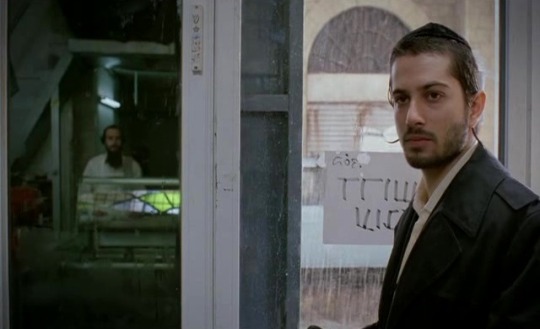



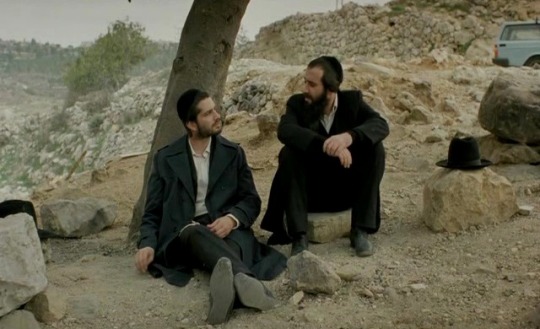


EYES WIDE OPEN (2009), directed by Haim Tabakman.
#eyes wide open#haim tabakman#ran danker#zohar strauss#gay#queer#lgbt#gay cinema#queer cinema#lgbt cinema#israeli cinema
10 notes
·
View notes
Text
‘Katil’ Filmi Salı Günü TV 8,5’ta!
‘Katil’ filmi salı akşamı, TV8,5 ekranlarında sinema severlerle buluşacak. Başrollerini Ninetta Tayep ve Olga Kurylenko gibi ünlü oyuncuların paylaştıkları sinema filmi; yarın, yani 13 Mart Salı akşamı ekranlarda olacak. Danny Lerner’in yönetmenliğini üstlendiği ve Ninetta Tayep, Olga Kurylenko, Liron Levo, Zohar Strauss gibi ünlü isimlerin rol aldığı ‘Katil’ filmi; 13 Mart Salı akşamı saat 21.15’te […]
‘Katil’ Filmi Salı Günü TV 8,5’ta! yazısı ilk önce Magazin Haberleri üzerinde ortaya çıktı.
from WordPress https://www.magazinhaberleri.com/katil-filmi-sali-gunu-tv-8-5ta/ http://ifttt.com/images/no_image_card.png
0 notes
Photo








Eyes Wide Open (2009)
36 notes
·
View notes
Photo


Zohar Strauss as Aaron Fleischman and Ran Danker as Ezri in Eyes Wide Open (2009)
14 notes
·
View notes
Photo
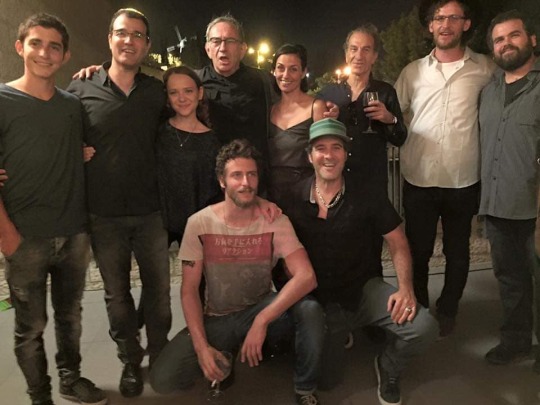
#tbt #michaelaloni #Shtisel So much love flowing for Shtisel Season 3 right now, but I've found some more photos to share from the first & second seasons. This photo from Season 2 features: Yoav Rotman (@yoavrotman1), director Alon Zingman, Shira Haas (@shirahaas), Dov Glickman, Michael Aloni (@michaelaloni), Producer Dikla Barkai (@diklabarkai), Sasson Gabay (@sassongabay), Zohar Strauss (@zoharstrauss), and co-creators Ori Elon & Yehonatan Indursky! I always enjoy seeing them dressed as themselves. You can tell this is a family offscreen too ❤. https://www.instagram.com/p/CCuZPuGjD5e/?igshid=bm2shc0qe4qm
1 note
·
View note
Photo




I can’t help it. I’ll violate my schedule and post yet more Ran Danker.
As I said, kosher butcher.
#israel#ran danker#israeli film#eyes wide open#zohar strauss#haim tabakman#peccadillo pictures#orthodox jew
9 notes
·
View notes